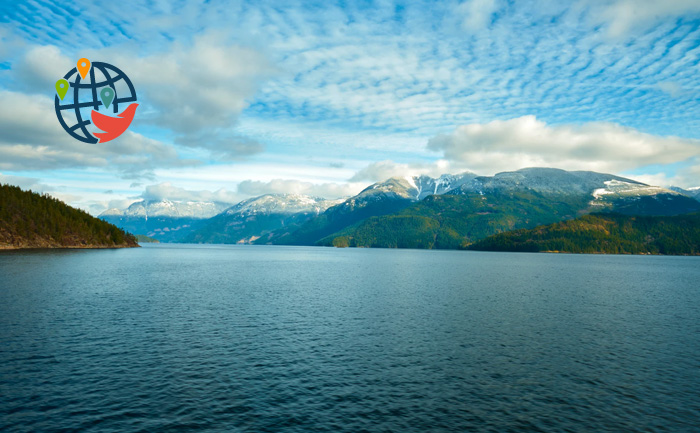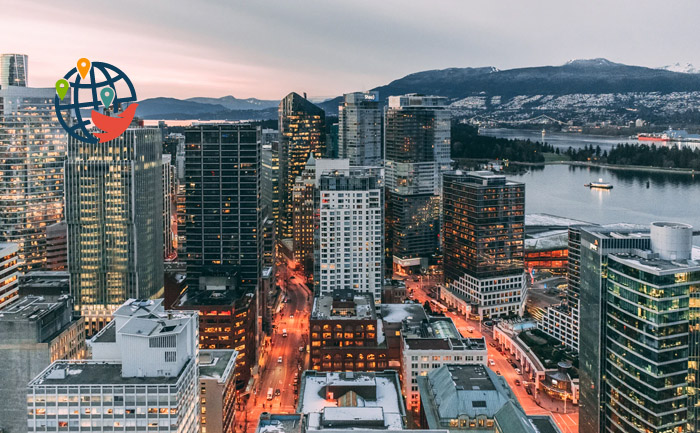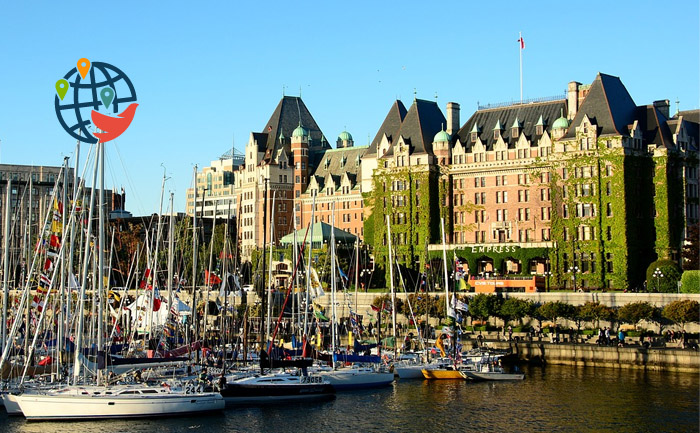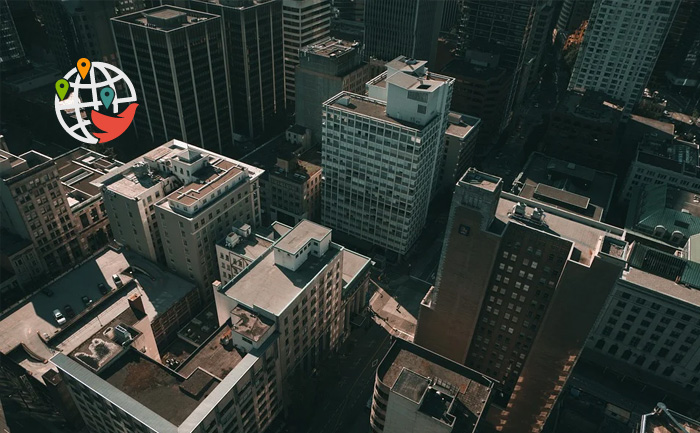British Columbia, The Most Romantic Province of Canada

Scenic mountains, Pacific coastline, skyscrapers, and endless opportunities: British Columbia attracts both Canadians and immigrants from around the world.
In this article, we'll cover the following topics:
- geographical location;
- climate;
- where to live;
- crime;
- education;
- work and salary;
- in-demand professions;
- prices and taxes;
- healthcare;
- population;
- what to see;
- immigration programs.
Romantic in Every Way
British Columbia is a province in western Canada, bordering Alberta, Yukon, the Northwest Territories, and the United States to the south. The capital is Victoria, while the largest city in the province is Vancouver, which is also the third-largest metropolis in Canada. The province is quite attractive to both Canadians and immigrants, with a population of over 5.6 million people.
British Columbia is a very romantic province! The Rocky Mountains lie to the east, while the Pacific Ocean washes its western shores. The coastal ranges, which tourists admire and frequently photograph, are also located there. In fact, mountains cover 70% of British Columbia's territory, while forests cover 60%.
Fun fact: British Columbia has a beautiful motto that translates to "splendor without diminishment."

Climate
British Columbia is one of the warmest provinces in Canada. The coastal areas have a mild but rainy climate, while the central regions are drier.
In the most populated areas of British Columbia, which are closer to the south, the average annual temperature is 10°C (50°F). Winters are short, and cold spells are rare. In most British Columbia cities, winter temperatures rarely drop below -10°C (14°F), except in the sparsely populated northern regions. Summers are typically hot, with temperatures around 20°C (68°F), but can sometimes exceed 30°C (86°F).
The coast experiences unpleasant winters, though not particularly cold. Cities are often under heavy cloud cover with low-lying fog. Worse still are the frequent heavy rains, which can make you feel cold even when temperatures are above freezing. When temperatures do drop below freezing, coastal areas are hit with snowstorms instead of rain.
In summer, drought in the central regions of the province creates conditions for forest fires.
Where to Live?
Vancouver
Although not the provincial capital, Vancouver has a much larger population. It's a warm city that attracts people from all over the country and is very appealing to immigrants. Greater Vancouver, the regional district centered around the city of Vancouver, has a population of over 2.6 million, while the city itself has more than 660,000 residents.
Interesting fact: The British publication The Economist has named Vancouver the "best city on Earth" three times.
What makes Vancouver stand out? For one, it ranks fourth among Canadian cities with the mildest winters. It also boasts excellent transportation, comfortable living conditions, and is Canada's largest industrial center.
The city is home to logging and mining companies, aerospace industries, and biotechnology firms. In recent years, Vancouver has become a hub for the film industry, software development, and video game production. In short, it's an excellent place for career development in various fields.
Naturally, it's a great option for relocating with children. Vancouver has many kindergartens, public and private schools, as well as 5 universities (in and around the city) and numerous colleges. International students are an important part of the city's educational system.
Some major employers in Vancouver include:
- Lululemon Athletica — athletic apparel retailer;
- BC Hydro — electric utility company;
- Aritzia — women's fashion brand;
- Telus Corporation — telecommunications company;
- Amazon — American e-commerce platform.
Vancouver offers plenty of entertainment for all ages: children, adults, youth, and seniors. This includes cinemas, theaters, museums, sports organizations, ski resorts, outdoor recreation areas, and a vibrant nightlife.
The climate here is warm: hot summers and mild but rainy winters. The average January low is just above freezing. On average, daytime temperatures fall below freezing only 4-5 days a year, and it snows about 11 days annually. Summer temperatures reach 20-25°C (68-77°F), and occasionally up to 30°C (86°F).
An international airport is located 15 kilometers from the city.

Victoria
The capital of British Columbia is located on the western edge of the province, on Vancouver Island (oddly enough, the city of Vancouver is not located there). The population of the Capital Regional District, which includes Victoria and some other municipalities, is over 450,000, while Victoria itself has about 92,000 residents, which is quite small compared to Vancouver.
Victoria is the most "British" city in Canada: red double-decker buses run through the center, there are several typical English shops, and at the Fairmont Empress Hotel on the waterfront, tourists can enjoy traditional English tea at exactly 5:00 PM. Many English retirees move here for the climate.
Victoria is considered the warmest city in Canada. In winter, the average temperature hovers around 3°C (37°F), and in summer, about 20-25°C (68-77°F). But like other coastal cities in British Columbia, Victoria experiences rainy winters.
The city's economy is primarily based on services and tourism, with up to 4 million tourists visiting annually. Pharmacology, medicine, microelectronics, and architecture are also well-developed. Victoria's port serves yachts and cruise ships.
Some major employers in the city include:
- University of Victoria;
- BC Public Service — the government of British Columbia;
- Fujitsu — major Japanese electronics manufacturer and IT company, with its Canadian headquarters in Victoria;
- Harris Computer — software development company.
For those considering relocating with children, there are plenty of elementary and secondary schools in the city. Additionally, there are two universities, one public college, and several private institutions. Educational institutions also offer English language programs for international students.

Other Cities
Besides Vancouver and Victoria, there are many other great cities to live in within the province. Here are a few of them.
Salmon Arm. Despite its small size, Salmon Arm ranked sixth in the top 10 best Canadian cities to live in for 2019. The city has a population of about 20,000 and has been growing slowly in recent years. Salmon Arm is a good option for relocating with children. It has kindergartens, schools, and a college.
Here's the English translation:
In summer, there are many tourists here because the city has beaches and outdoor recreation areas. Renting houseboats — vessels designed for living — is especially popular among travelers. The weather is pleasant too, with temperatures often reaching 25-26°C. Winters are also mild, with an average of -6°C.
Many city residents work in the forestry industry or related businesses. The tourism sector and hospitality industry are also popular, and you can find jobs as rowing instructors.
Other economic sectors have shown good growth recently, such as agriculture and services. The unemployment rate in the city is rapidly decreasing.
West Kelowna. This city ranked 12th in the list of best places to live in Canada, so it's worth considering. It has a population of about 38,000 people.
West Kelowna's economy is mainly based on agriculture, construction, finance, retail services, technology, and the wine industry. Many new businesses are starting up here: over 2,000 licenses are issued annually, so there's no shortage of jobs.
The city has several shopping districts with many stores, cafes, and restaurants, as well as business centers. There are enough schools in West Kelowna, but no colleges or universities: higher education can be obtained in the neighboring city of Kelowna.
Fort St. John. Located in the northeastern part of the province, this city is a mix of urban and rural environments. Fort St. John is very small, its area is only 22.69 square kilometers. The population is just over 22,000, but the people are friendly and always ready to help immigrants. Fort St. John has several schools and one college.
The city's economy is mainly driven by the gas and oil industries, as well as forestry. That's why it's not surprising that Fort St. John has high salaries. Many people earn up to $100,000 CAD per year or more, while the unemployment rate is low.
The cool climate might be seen as a drawback in Fort St. John. Winter temperatures hover around -17°C. However, summers are warm, averaging 20-22°C.
Crime Rate
Compared to other Canadian provinces, British Columbia has a high crime rate. There are about 8-9 crimes per 1,000 residents in the province.
Education
University of British Columbia
The University of British Columbia is one of the most famous universities in Canada. In 2024, it ranked third among Canadian universities in the QS World University Rankings. The university has campuses in Vancouver and Kelowna. It has over 70,000 students, with an impressive number of international students — over 20,000. However, tuition fees at the University of British Columbia are very high compared to other Canadian institutions. International students will have to pay between $45,000 and $60,000 CAD per year for undergraduate programs, depending on the faculty. One— to two-year programs start at $29,500 CAD per year. On-campus accommodation costs around $11,000 CAD per year.
Simon Fraser University
Simon Fraser University has three campuses, with the main one in Burnaby and two others in Vancouver and Surrey. The university consistently ranks among the top universities in Canada. It has over 37,000 students, with more than 8,000 international students. International students pay from $32,000 CAD per year for undergraduate programs, from $22,000 for 1-2 year programs, and from $8,000 per year for on-campus accommodation.
University of Victoria
The University of Victoria is located in the provincial capital. It was initially a branch of McGill University, then the University of British Columbia, but later became an independent research university. The university has over 22,000 students, including more than 4,000 international students. In 2019, the University of Victoria ranked first among Canadian universities for preparing students for employment and professional work. International students pay between $31,000 and $35,000 CAD per year for undergraduate programs, plus $8,400 to $14,000 CAD per year for on-campus accommodation.
Work and Salary in British Columbia
Many people want to live and work in British Columbia. Surprisingly, there's no shortage of jobs in the province. There are especially many job openings in Vancouver, Surrey, Burnaby, Victoria, Richmond, Kelowna, and Abbotsford.
The minimum wage in British Columbia is among the highest in the country at $17.40 CAD per hour. Only Yukon, one of the northern territories, has a higher rate. Working 40 hours a week at minimum wage, you'll earn $2,981 CAD per month. The median wage in British Columbia is also higher than in many regions of Canada, at $30 CAD per hour. This amounts to $5,200 CAD per month. The median wage means that half of the workers in the province earn more than this rate and half earn less.
The earning prospects are quite good. However, unfortunately, you'll likely spend a significant part of your income on housing. We'll talk about prices a bit later.
You have seen 64% of the text.
This article is available only to users with Premium Access.
Want to get access to this and other Premium articles? Subscribe to Premium Access!





























